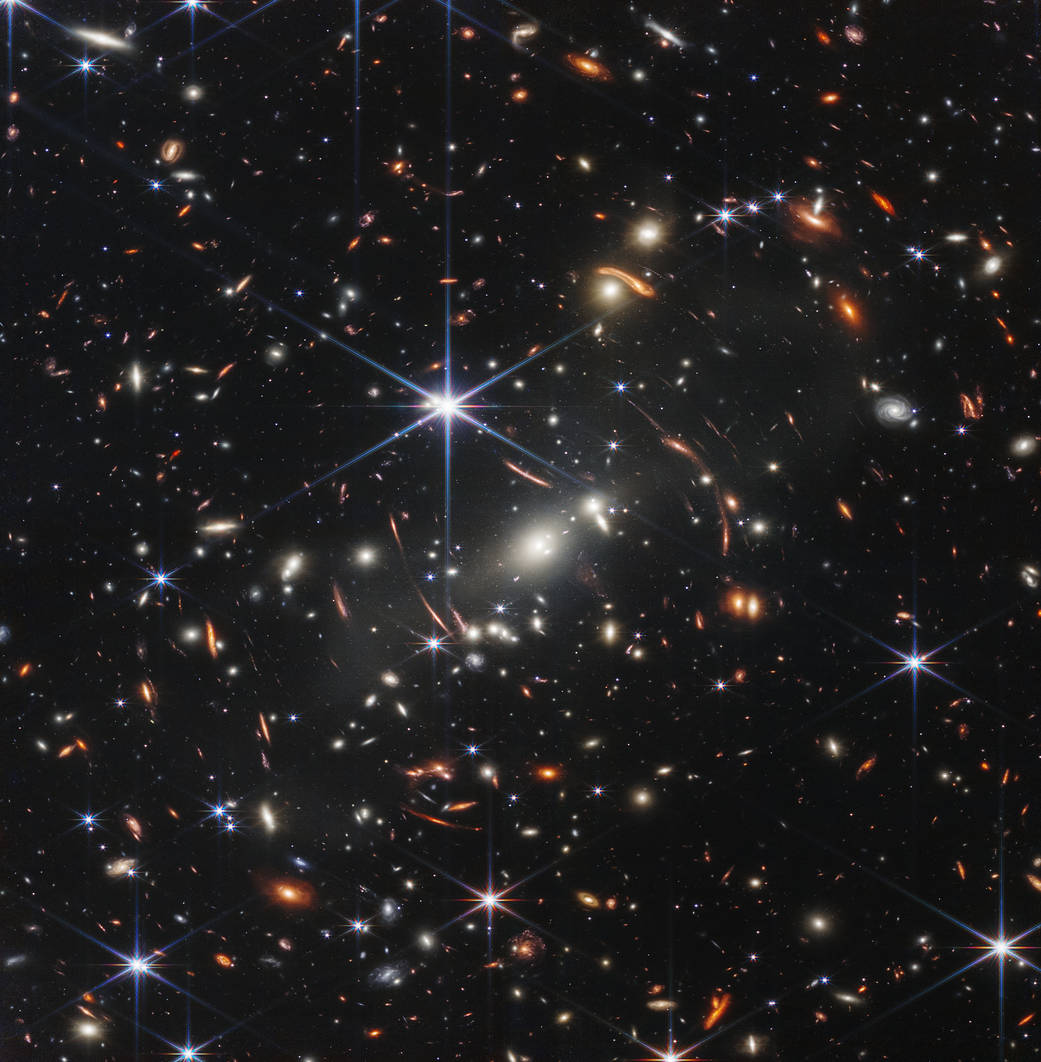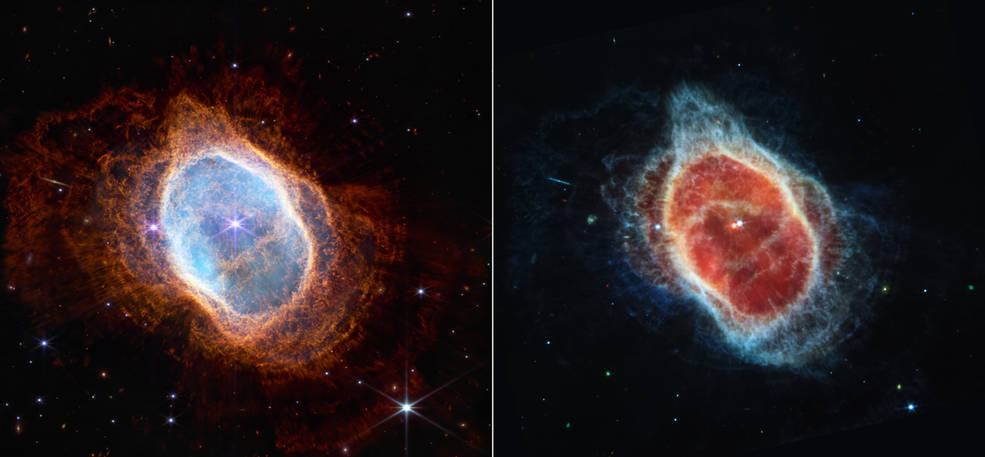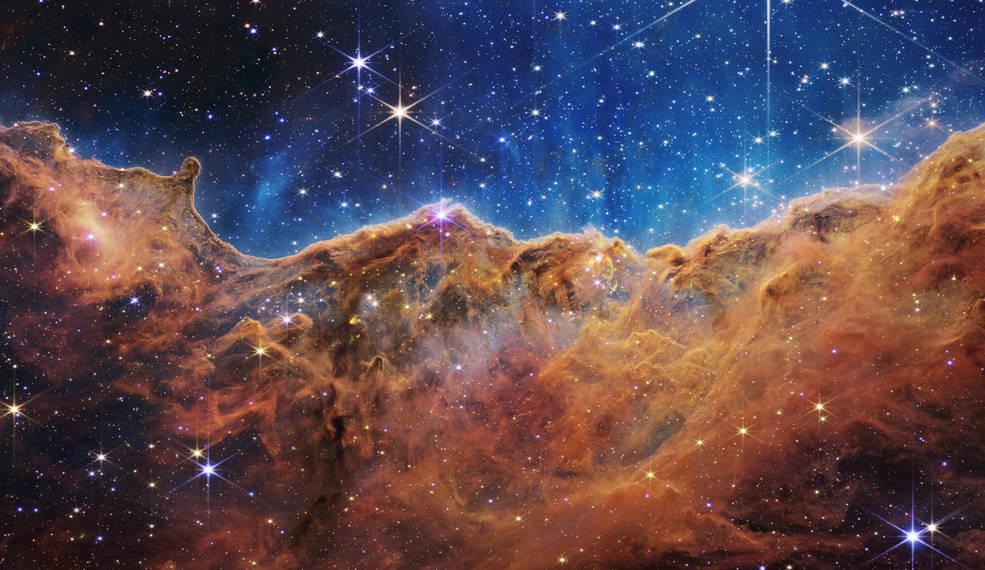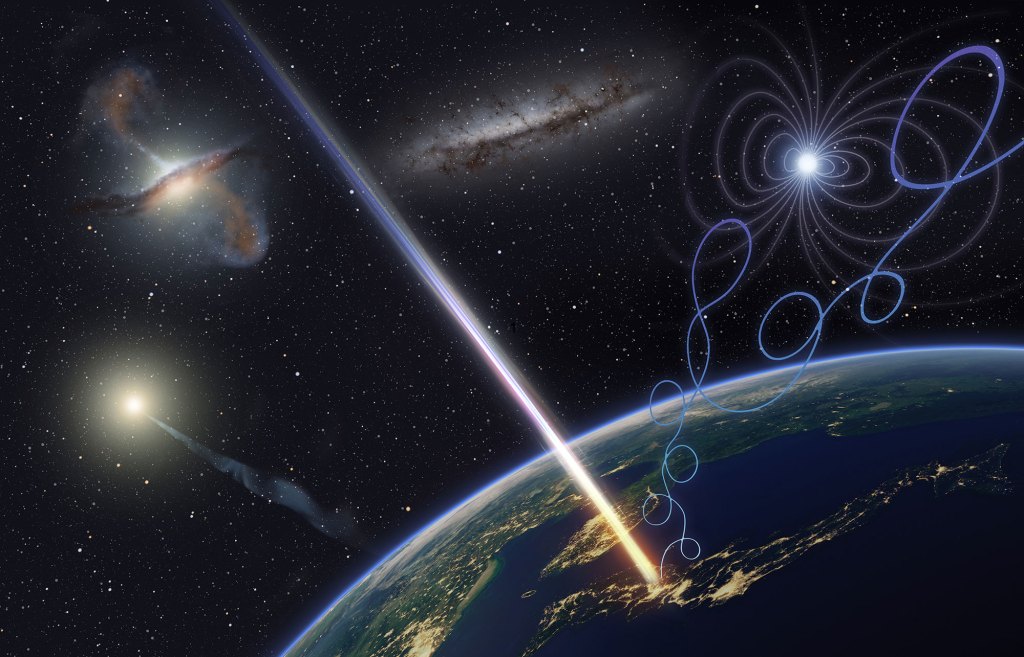On Tuesday, NASA revealed five mind-boggling images from the James Webb Space Telescope—the most powerful telescope ever launched into space, currently one million miles away.
The JWST is humanity’s newest and best way to look deep into the cosmos, all the way back to the period of time immediately after the Big Bang. The telescope is 100 times more powerful than Hubble, and is capable of capturing longer infrared wavelengths, which will let it see galaxies that are further away, or highly redshifted. Space is curious in that looking further into the distance means we are also looking back in time, and so in seeking the most ancient stars and galaxies, JWST is effectively looking at the beginning of time and space.
Videos by VICE
“This is our time machine,” said Dr. John Mather, senior project scientist for Webb, during NASA’s Tuesday broadcast. Of course, Webb will also be used to generate more insights about objects that are closer to us, an ability that was on full display during the telescope’s first big photo dump.
First image: Deep Field

The light from stars and galaxies in this image comes from over 13 billion years ago—the Big Bang occured 13.8 billion years ago, meaning this image depicts a moment not long after the dawn of time. Gravity of clusters is warping what’s behind them, an effect called “lensing,” so some objects look smudged, because they’re being magnified. Zoom in on it to reveal wild details.
Second image: Exoplanet

This is an “indirect” image; visual images from space are often reconstructed from light data, so this is kind of the raw set. While it’s not as visually appealing as the deep field, it does contain a ton of information for scientists. This is the spectrum of exoplanet WASP-96 b, which is a gas giant that’s located 1,120 light-years from Earth. Bumps and wiggles indicate water vapor in the atmosphere. There’s going to be a lot more data like this from other planets and asteroids in the future.
Third image: Star Death

This is a looker, and a two-fer to boot. It’s a highly detailed near-infrared image of a nebula called the Southern Ring, caused by a dying star, 2,500 light-years away. The “foamy” ring around the nebula is caused by molecular hydrogen generated by the massive explosion. The “rays” are actually holes in the inner nebula that allow the star’s light to shine through. At the center of the nebula are two stars—scientists knew the Southern Ring was a binary star system, but now we can see them clearly.
Fourth image: Galaxies

This is an image of Stephan’s Quintet, which is a close grouping of galaxies that was first discovered in 1877 by Edouard Stephan. There’s five in the photo, but it’s a bit of a visual trick. One of the galaxies is about 40 million light-years from Earth, but the other four are a true compact grouping, all of them existing between 210 million and 340 million light-years away. In a sense, it’s a photo that takes us from the nearby, modern universe, all the way to the ancient universe.
Fifth image: Star Birth

This is an image of a “stellar nursery,” a region where new stars are born, and it depicts baby stars that were previously hidden from our view. The focus is on the Carina nebula, which is a star-forming region right here in the Milky Way. Even so, the Webb image reveals hundreds of new stars, and cosmic “structures that, honestly, we don’t even know what they are,” according to Amber Straughn, Deputy Project Scientist for JWST, who presented the photo.




